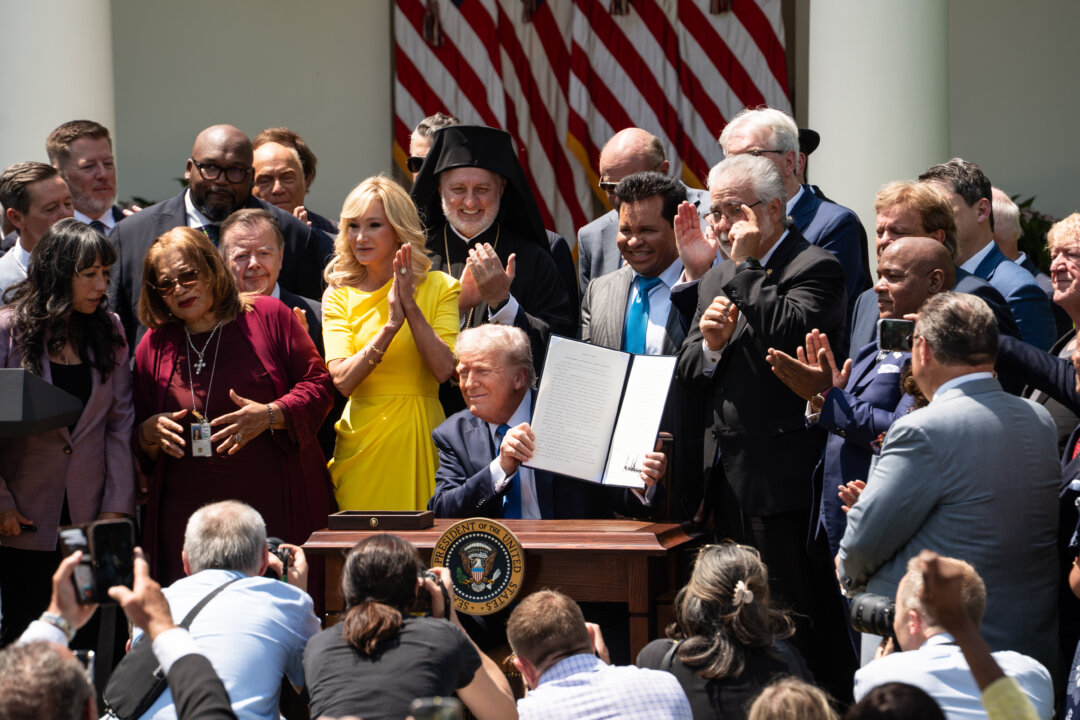Members include religious leaders, legal experts, and public figures, including Dr. Ben Carson.
President Donald Trump has signed an executive order establishing the Religious Liberty Commission to “safeguard and promote America’s founding principle of religious freedom,” according to the White House.
“Americans need to be reacquainted with our nation’s superb experiment in religious freedom in order to preserve it against emerging threats,” Trump’s executive order reads.
The May 1 order directed the commission to create a comprehensive report about the nation’s history of religious liberty. The group will also outline threats to that liberty and create recommendations on how to protect religious freedoms.
“We’re bringing religion back to our country,” Trump said during the event. “It’s a big deal.”
Texas Lt. Gov. Dan Patrick issued a statement on May 1 saying he was honored to be named chairman of the commission.
“We will carry out the president’s important mission to preserve and strengthen religious liberty in our country,” Patrick said. “I thank President Trump for his steadfast commitment to ensuring our nation returns to our founding principles of faith and religious liberty.”
Members of the commission include religious leaders, legal experts, and public figures, including Dr. Ben Carson as the vice chair. Carson was secretary of Housing and Urban Development during Trump’s first term.
The order’s fact sheet stated that the key focus areas include parental rights in religious education, school choice, conscience protections, attacks on houses of worship, free speech for religious entities, and institutional autonomy.
The commission has also been asked to consider specific topics such as vaccine mandates and voluntary prayer in public schools.A February executive order established the Task Force to Eradicate Anti-Christian Bias, which was formed to end the alleged weaponization of government and unlawful conduct targeting Christians.
The task force had its first meeting on April 22, hosted by Attorney General Pam Bondi. The group included a number of Cabinet members, and each of the speakers highlighted cases within their agencies where they believe the Biden administration targeted Christians for their religious beliefs.
During his first administration, Trump enacted the Department of Justice Religious Liberty Task Force, which was created in 2018 under the tutelage of then-Attorney General Jeff Sessions and worked on religious liberty litigation and policy.
One of the earliest instances of the executive branch ordering the creation of religious positions was in the 1940s when President Franklin Roosevelt expanded the role of military chaplains, allowing for clergy from a wide range of faiths to serve.
In a February 1934 letter, Roosevelt stressed the importance of spiritual guidance in the military, saying, “Chaplains of the military and naval services and clergymen everywhere who by word and life are advancing the cause of idealism and true religion are doing a commendable work, one that is absolutely essential to the life of the nation.”
Later, during a fireside chat in October 1942, the president publicly confirmed his commitment to the spiritual welfare of military personnel, saying, “We will never fail to provide for the spiritual needs of our officers and men under the chaplains of our armed services.”
Decades later, one of the next major executive branch religious moves took place with the creation of the U.S. Commission on International Religious Freedom in 1998 under the Clinton administration.
The group is an independent, bipartisan legislative branch agency that monitors freedom of religion abroad and makes recommendations to the president, secretary of state, and Congress.
The next administration, under President George W. Bush, created the White House Office of Faith-Based and Neighborhood Partnerships in 2001 to welcome partnerships with faith-based and community organizations, calling them “indispensable in meeting the needs of poor Americans and distressed neighborhoods.”
The executive order said the goal of the partnership was “compassionate results, and private and charitable community groups, including religious ones.”
The partnership group was expanded by the Obama administration in 2009 to include a broader range of community organizations and was no longer limited to faith-based groups. Obama’s executive order called for the council to ensure that federally funded services were provided in a way that included equal protection regardless of religious expression.

